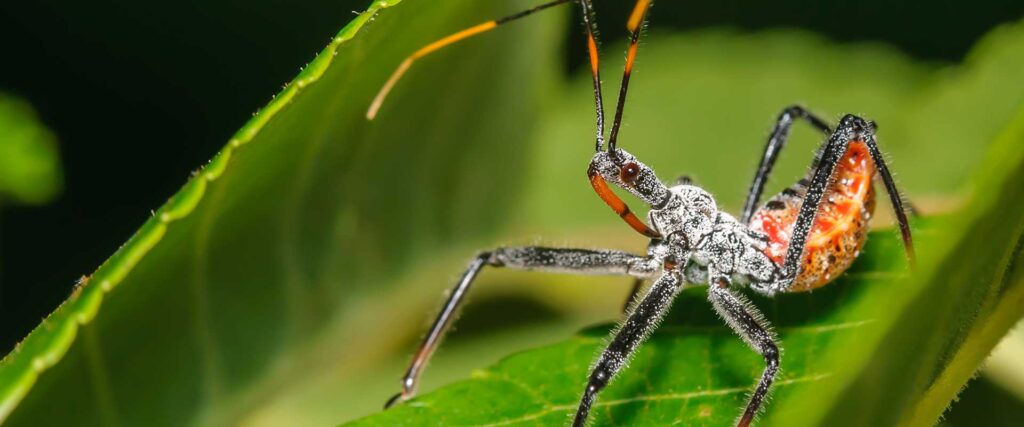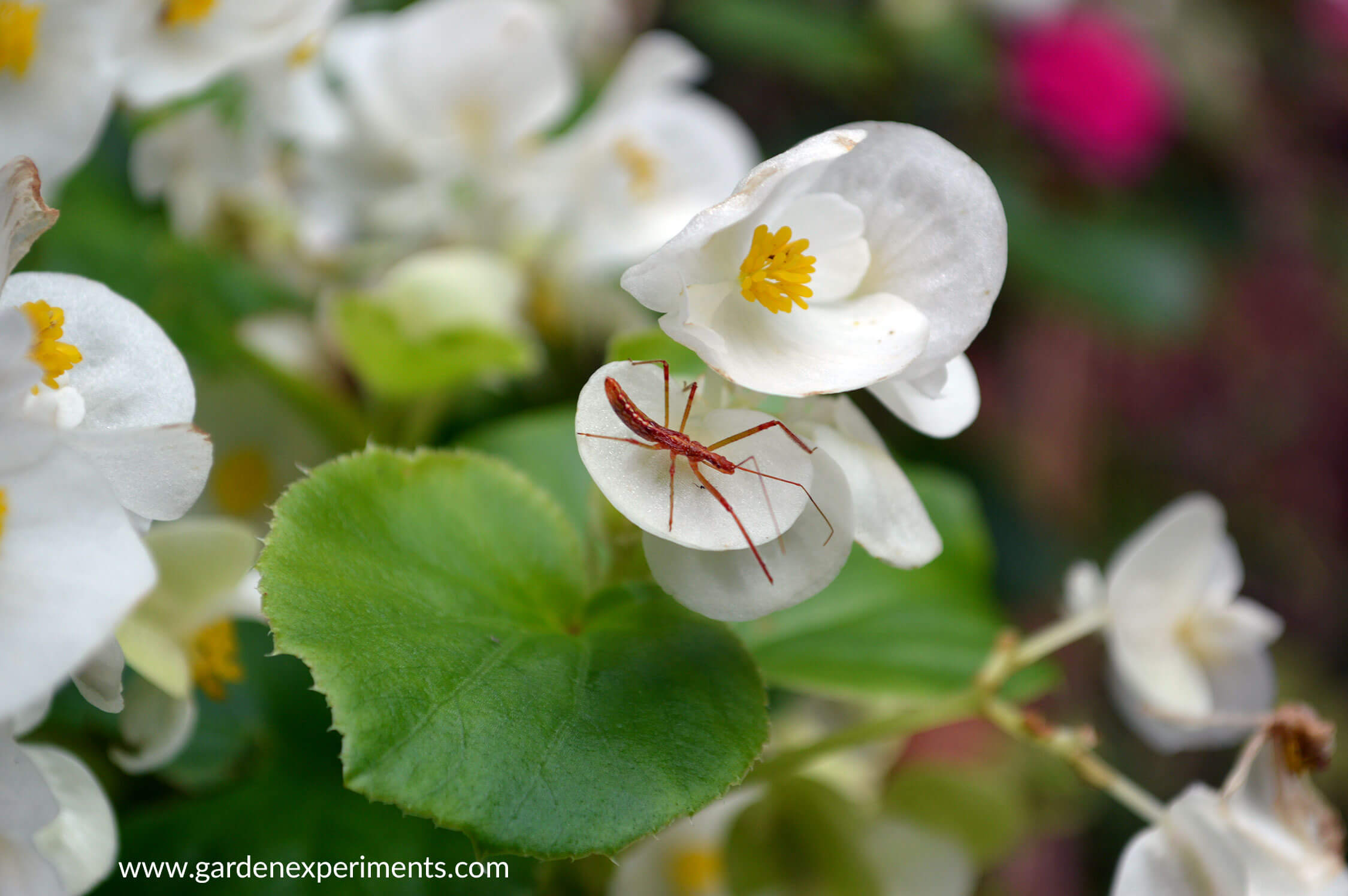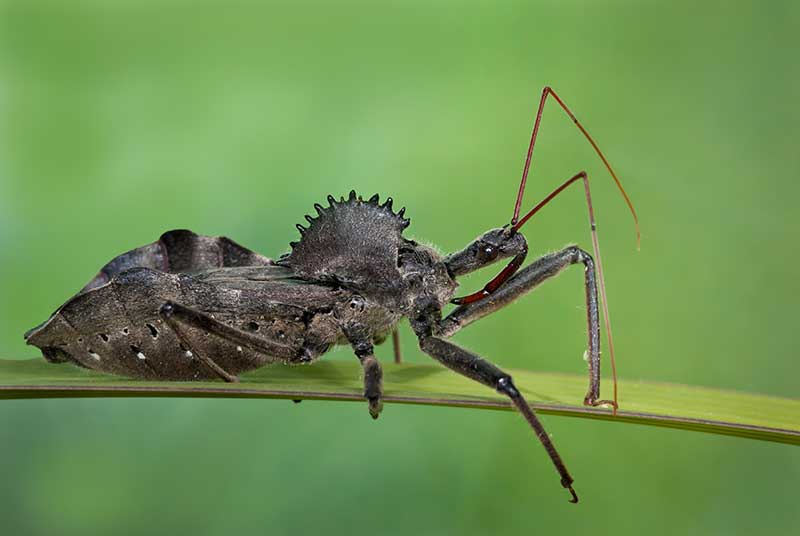
Have you seen an assassin bug in your garden? I don’t know how I never noticed these little insects during the years I have been gardening, but they just never registered on my radar.
A friend recently posted about being stung by one of these, and that very same day, I realized that I had taken a photograph of a juvenile assassin bug.

Are Assassin Bugs Beneficial Insects?
There are about 160 species of assassin bugs in North America and 7,000 species worldwide. Despite their scary name, most of them are helpful to your garden. They are predators that feed on other insects that can harm your plants. These insects are good for your garden.
Many of these insects can pack a painful sting, so avoid handling them. Just another reason to wear gloves when you garden if you ask me.
How They Eat
Adults have a long mouthpart (a rostrum) that they use to stab their prey and inject a paralyzing toxin that also helps to dissolve the prey. Once their prey is immobilized, they suck up the bodily fluids of their prey through the rostrum. Yuck!
Despite their gruesome eating techniques, these are beneficial insects (except for a few species), so keep them around; just be cautious about handling them.
How to Identify an Assassin Bug
These insects have a long, narrow head and an elongated body with long, folded legs. They can be a few millimeters long up to three centimeters. With so many species, these insects have many shapes, sizes, and colors.
All of these insects have the long mouthpart, the rostrum, used to spear their victims. It looks like a pointy beak.
Wheel Bugs
Wheel bugs are a type of gray insect with a sizeable wheel-like structure protruding from its back. It is one of the more common types of assassin bugs in the garden. They are about 0.25 inches long.

